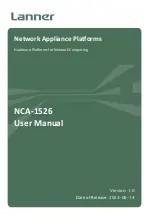
10
english
3.4.2 Contact temperature, relative humidity,
ambient pressure
The modules for relative humidity and ambient
pressure are only available for the
BCM R15E-
002
-DI00-_ _ , _-S4.
The contact temperature indicates the
temperature on the contact surface. In contrast,
the device temperature is the temperature in the
interior of the sensor, which can be used for
maintenance purposes.
The measurement value of the humidity
corresponds to the humidity of the ambient
conditions within the sensor. As a result of the
principle, however, the measured humidity is
influenced by the temperature of the contact
surface and may therefore (depending on the
contact temperature) deviate from the actual
humidity in the ambient air.
As a result of the principle, the humidity module
has a hysteresis between the rising and falling
ambient humidity.
A clean and dry membrane is required to
measure the ambient pressure and humidity.
The sensor requires approximately 5 minutes to
warm up until the self-heating and the contact
temperature have been compensated for.
The contact temperature, relative humidity and ambient
pressure modules have the same functional structure. The
following explanation applies equally for all three modules.
The sensor measures the respective measurement value
and stores the following statistical values:
– Minimum and maximum variable since last startup of
the sensor
– Minimum and maximum variable since production
– Minimum and maximum variable since the last manual
reset
Additionally, the sensor can detect when a threshold is
exceeded or underrun (see Fig. 3-4).
t
Upper threshold
Lower
threshold
Current
measurement
value
I
II
III
IV
I
Lower threshold underrun
II
Lower threshold no longer underrun
III
Upper threshold exceeded
IV
Upper threshold no longer exceeded
Fig. 3-4: Measurement variables – Thresholds
3.4.3 Vibration
For vibration analysis, the sensor measures the
acceleration in the X, Y and Z axes. The vibration
evaluation is carried out in both the vibration velocity values
and the vibration acceleration values. In the case of
vibration analysis, the sensor does not provide the raw
vibration data, but instead provides the statistical
parameters. The calculation of the acceleration and
velocity parameters is carried out within a time window
that can be configured for the vibration module.
The output data is updated after a time window
has expired. Therefore, the time window
represents a trade-off between the data rate
and the stability of the signal.
An additional sensor function is the bandpass limitation of
the acceleration signal. The frequencies outside the
relevant frequency range can be attenuated using a
bandpass filter. For the purposes of limitation, a lower and
upper frequency limit can be configured in the sensor. The
filtered signal is used for further calculations and analyses.
When selecting the time window, take into
account that the frequency of the signal must
not undershoot a certain limit that is based on
the time window that was selected. For this
purpose, the lower band limit must be
configured to the minimum frequency or to a
higher value.
The smallest possible frequencies for each time window
are listed in Tab. 3-3 on page 11.
3
Construction and function (continued)
BCM R15E-00 _ -DI00-_ _ , _-S4
Condition Monitoring Sensor
Summary of Contents for BCM R15E-00 Series
Page 1: ...BCM R15E 00_ DI00 _ _ _ S4 deutsch Betriebsanleitung english User s guide...
Page 2: ...www balluff com...
Page 3: ...BCM R15E 00_ DI00 _ _ _ S4 Betriebsanleitung deutsch...
Page 4: ...www balluff com...
Page 49: ...BCM R15E 00_ DI00 _ _ _ S4 User s Guide english...
Page 50: ...www balluff com...
Page 95: ......
















































